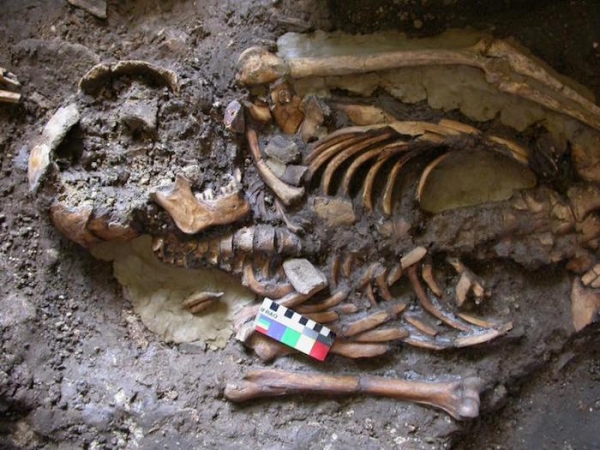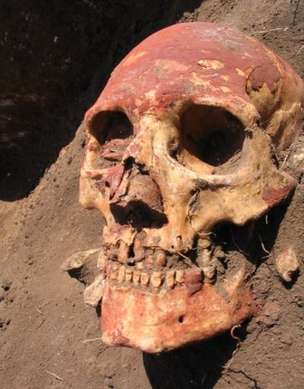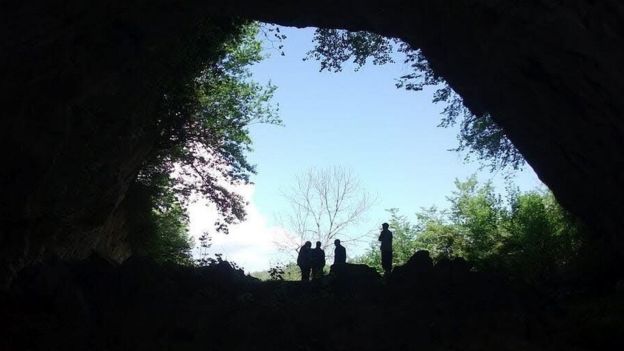News
New Study Finds Modern Europeans Have a 4th DNA Strain

Recently geneticists discovered a 4th ancestral ‘tribe’ which helped seed the modern European Gene Pool.
Research and genetics have shown us that modern Europeans are a mix between 3 major groups that traveled to Europe at various times. Indigenous hunters, a group from the east who came during the Bronze Age and a group of Middle eastern Farmers were already known to be in a mix. Now the DNA from some ancient remains reveal a 4th ancestor’s DNA that was added to the mix.
With new technology and the mapping of the human genome, researchers have a huge advantage when they are out on expeditions. They can travel to ancient burial grounds and discover more about our long and mostly hidden past. The human genome is a blueprint for a human and its contained within the DNA of every cell. This also means that we only need one good cell to analyze the DNA of our ancient ancestors.
This now outpouring of data is helping us better understand ourselves while also showing us how little we know about the genetics of the past. We used to think that our modern DNA was a good indication of where we came from, but we are finding that we were wrong. We are the end result and are still finding all of the seeds that created us.
If you were to break it all down into a timeline the indigenous hunter-gatherers appear to enter Europe before the Ice Age that took place around 40,000 years ago. In more recent times, 7,000 years ago, that group was swept up into the migration of Middle Eastern Farmers.
The Language shift
Then around 3,000 years ago a group of herders called the Yamnaya moved to Europe from the Russia and Ukraine eastern Steppe region.
These new people brought horse riding and metal working to the area as well as Indo-European languages. This group is the biggest influence on the modern languages spoken in Europe.
In the Yamnaya burial grounds, researchers discovered traces of the plague which makes them suspect that their passage may have been because of spreading diseases.
Gene pools were transformed by the Yamnaya tribe. Modern central and northern Europeans, such as the Norwegian owe up to 50% of their ancestry to this ancient people.
But who made up the Yamanaya? They were actually also a mixed people. Half of their population came from a sister group of hunter-gatherers before Europe had farmers. The other half comes from a group that is noticeable different from theMiddle Eastern farmers.
With the new discovery, researchers were able to analyse genomes from 2 groups of hunter-gathers from Georgia. One was 13,000 years old and the other around 9,700. The results show us that these early Caucasus humans were probably the farmer DNA that makes up the other half of the Yamnaya people.
Researchers have now analysed genomes from two hunter-gatherers from Georgia that are 13,300 and 9,700 years old. The results show that these Caucasus hunters were probably the source of the farmer-like DNA in the Yamnaya.
Isolation by ice
The new group of Caucasus hunter-gatherer’s DNA shows that they mixed every so often with their Middle Eastern cousins in the south who went on to invent farming techniques 10,000 years ago. The mixing, however, stops around 25,000 years ago. It is just before the time of the glacial Ice Age.
When you look at the DNA you can tell that the genetic variety shrunk during the time of the ice age as the population shrunk. This is a sign that there was more breeding between people with similar DNA.
Once the ice receded the newly discovered Caucasus people made contact with a different group of hunter-gatherers living in the Steppe area and mixed with them. That seeded the Yamnaya people.
“The question of where the Yamnaya come from has been something of a mystery up to now,” said Dr Andrea Manica, co-author of the research from the University of Cambridge.
“We can now answer that as we’ve found that their genetic make-up is a mix of Eastern European hunter-gatherers and a population from this pocket of Caucasus hunter-gatherers who weathered much of the last Ice Age in apparent isolation.”
This same group may have also influenced other groups such as those further east in South Asia which may be why there was a spread of Indo-European languages into that region.
With all of the changes going on in what we know about ourselves and our ancestry, it may become even harder to predict what our genetics will do in the future. Learning where we come from shines light on the present and future but until we know more it only a big guessing game.
Sources-
Typos, corrections and/or news tips? Email us at Contact@TheMindUnleashed.com


